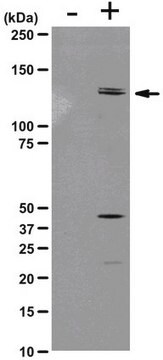GF53078182
Cadmium
rod, 150mm, diameter 10.0mm, as drawn, 99.99+%
Sinonimo/i:
Cadmium, CD007925
About This Item
Prodotti consigliati
Saggio
99.99%
Forma fisica
rod
Produttore/marchio commerciale
Goodfellow 530-781-82
Resistività
7.27 μΩ-cm, 22°C
L × diam.
150 mm × 10.0 mm
P. eboll.
765 °C (lit.)
Punto di fusione
320.9 °C (lit.)
Densità
8.65 g/mL at 25 °C (lit.)
Stringa SMILE
[Cd]
InChI
1S/Cd
BDOSMKKIYDKNTQ-UHFFFAOYSA-N
Cerchi prodotti simili? Visita Guida al confronto tra prodotti
Categorie correlate
Descrizione generale
Note legali
Avvertenze
Warning
Indicazioni di pericolo
Consigli di prudenza
Classi di pericolo
Aquatic Acute 1 - Aquatic Chronic 1
Codice della classe di stoccaggio
13 - Non Combustible Solids
Classe di pericolosità dell'acqua (WGK)
WGK 3
Punto d’infiammabilità (°F)
Not applicable
Punto d’infiammabilità (°C)
Not applicable
Certificati d'analisi (COA)
Cerca il Certificati d'analisi (COA) digitando il numero di lotto/batch corrispondente. I numeri di lotto o di batch sono stampati sull'etichetta dei prodotti dopo la parola ‘Lotto’ o ‘Batch’.
Possiedi già questo prodotto?
I documenti relativi ai prodotti acquistati recentemente sono disponibili nell’Archivio dei documenti.
Il team dei nostri ricercatori vanta grande esperienza in tutte le aree della ricerca quali Life Science, scienza dei materiali, sintesi chimica, cromatografia, discipline analitiche, ecc..
Contatta l'Assistenza Tecnica.








